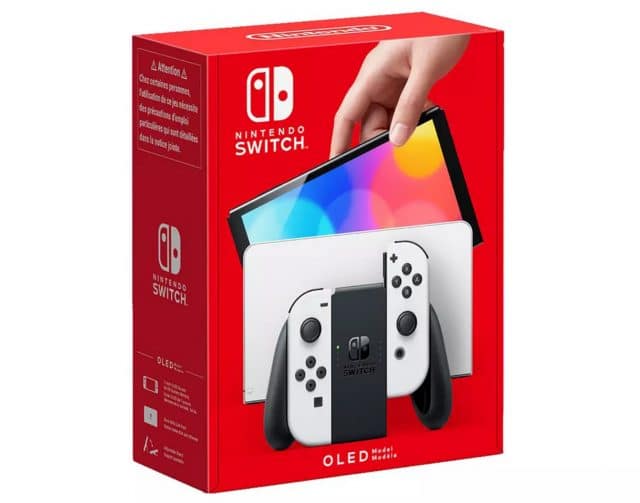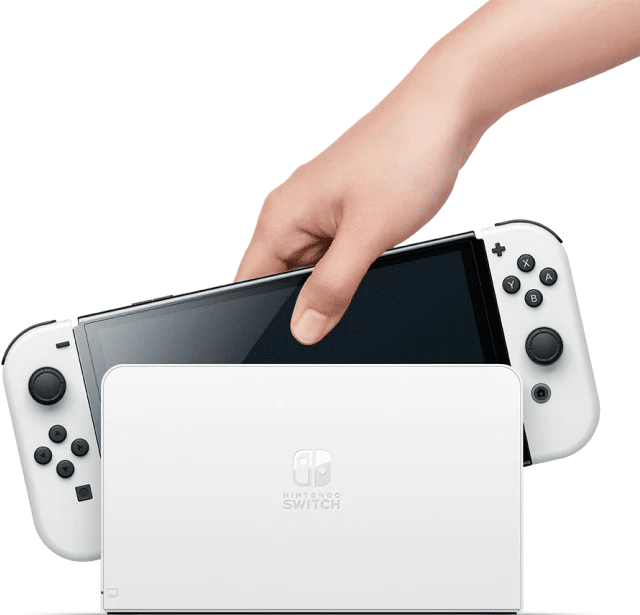What Nintendo's new OLED Switch means for console gaming

As pre-orders for the latest version of the Nintendo Switch system continue to pour in, Nintendo made some interesting news this week related to how the media has been reporting on the new device. And it has ignited even more discussion about the unique new benefit (and the unique exclusion) of the upgraded console.
The new OLED Switch boasts a significant improvement to the console's built-in screen and … not much else. At one point, there was reporting that it would support 4K output when used in TV mode, but Nintendo never officially announced that and did not include it as a feature. So some Nintendo fans may have felt ripped off when a recent Bloomberg article was posted, saying that the OLED Switch would have a higher profit margin.
In an unusual step, Nintendo made an official statement in response to the story, calling the assertion "incorrect," and even more unusually it felt the need to clarify that "Nintendo Switch (OLED Model) will launch in October 2021, and [we] have no plans for launching any other model at this time."
That latter part of the statement may have been related to the earlier confusion about the device supporting 4K output, which was also originally reported by Bloomberg. When that feature ended up not actually being included in the upgraded Switch, it set off a bit of controversy as fans debated how big of a miss that was. To suggest that Nintendo may have intentionally excluded it just to make a few extra bucks has brought this discussion back to the forefront.
There may be an even bigger story, though, about the impact of the fact that the OLED Switch basically does nothing to improve the HDMI-connected "TV mode" of the console. With this latest console, Nintendo is beginning to create some notable distance between the Switch, and the latest PlayStation and Xbox offerings.
The new model will mark the third iteration of the Nintendo Switch. In 2019, the company released the Nintendo Switch Lite, a cheaper version that can only be played as a handheld device. The new Switch goes in the other direction as a more premium product, carrying a $350 price tag, yet at the same time it also goes in the same direction as the Lite: focusing nearly exclusively on its handheld aspect.
That is, the OLED Switch will carry the exact same technical specifications as the existing Switch. It has a shiny new OLED screen for playing games in its portable configuration, but plugging the thing into an HDMI port provides almost no difference. The only exceptions are that the OLED Switch does contain a physical LAN port (the original Switch can only connect online via Wi-Fi) and 32GB more built-in storage, but these are minor tweaks that would be difficult to justify as being worth it for anyone who plays the Switch primarily on a TV.
The Switch is now over three years old. By the time the PlayStation 4 reached that age, Sony released the PS4 Pro, a more powerful version of the console with enhanced CPU and GPU components, and which also improved the HD rendering capability from 720p to 1080p. Microsoft did a similar technical reboot of its Xbox One after four years on the market.
However, Nintendo has explicitly chosen not to go that route. The more expensive Switch has the exact same specs as the original unit (and even the cheaper unit, for that matter). So it almost appears as though Nintendo is tacitly admitting that it cannot even try to go after its competitors in terms of technical capabilities. Instead it focuses on what it's been doing for years -- carve out its own niche and then own it.

This kind of schism has existed in the market for some time. Nintendo almost openly stopped trying to compete for the hardcore gamer segment at least a couple decades ago; some could even argue it never truly went after that segment. But it did at least still position itself as a viable platform for multi-platform releases. That has become less and less true since the launch of the Wii with its wildly different controllers.
The Switch also was never meant to compete on a technical level, but it did still compete on an overall level for gamers' HDMI ports. This latest upgrade is starting to push the idea that the Switch should be seen less and less as a traditional home console. That being said, for those who do prefer playing the Switch on the go, the extra $50 can easily be justified. In the world of consumer electronics, it's difficult to overstate how much more vibrant and colorful images are on an OLED display compared to traditional LCD screens. It may in fact intrigue a new segment of gamer who doesn't care about gaming on a TV but wants something more compelling that mobile gaming (and the original Switch). So Nintendo gets to do what it loves: launch a new mass-market gaming category (in this case, portable OLED gaming) and then take complete ownership of it, even at the cost of drifting further and further away from the other players.
But hopefully we can get a 4K Switch soon too…
